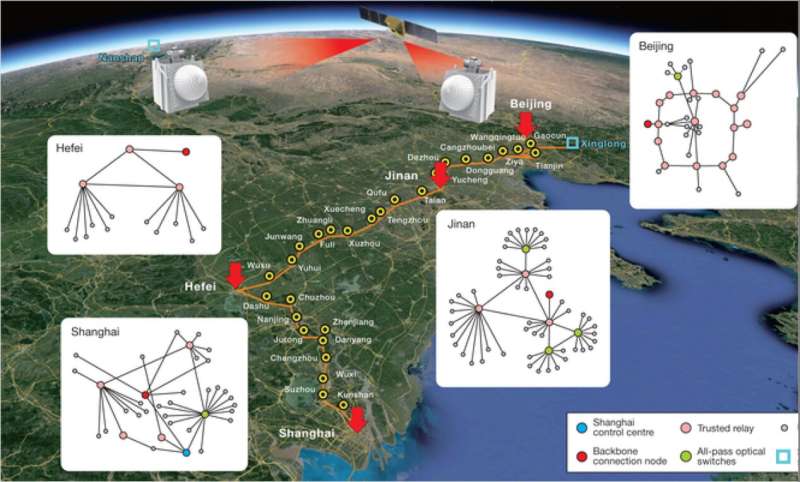Not only did the German researchers maintain quantum entanglement at a distance of 33 km, but they also used a wavelength close to that currently used in conventional optical fiber. Proving that current networks could be used for future quantum communications. Which brings us a little closer to a quantum internet and the guarantee of the inviolability of the exchange of information.
To get closer to the era of quantum communications, we must keep the entangled atoms moving away. This is a record distance that German researchers have just achieved by maintaining quantum entanglement between two atoms 33 km apart. These scientists from the universities of Ludwig-Maximilians (Munich) and Saarland linked the state of two rubidium atoms using the principle of quantum entanglement, a state in which two particles have their natures modeled on one another. the other. In this state, the two particles are indistinguishable and any action on one generates a change in the nature of the other… even at a distance of kilometers.
From a practical point of view, the researchers entangled two rubidium atoms held in their “optical traps”. These two atoms were initially connected by an optical fiber and physically placed 700 m apart from each other in two buildings of the Munich university. Once this state was obtained, the length of the fiber was increased to 33 km and the entanglement maintained.
To check and compare their state, the two atoms were excited by a laser, a procedure that results in the emission of photons. The interest of the maneuver? The photons thus created are also entangled with the original atom. In the middle of the path, a receiver checks the state of the two photons to verify that they are of the same nature.
The interest of manipulation is to be found in one of the promises of quantum communication: its security. In current communications, if an individual with decryption capabilities intercepts your communications, he can read/listen to them without being detected. However, as soon as a quantum signal is observed, its state changes automatically and we can thus know that it has been intercepted. The more we manage to remove entangled quantum particles, the closer we come to a world with inviolable communication channels. And extremely fast since quantum entanglement overturns the physical laws of classical mechanics – quantum entanglement is information that travels faster than the speed of light.
In addition to the feat of maintaining the entanglement between two quantum particles at such a great distance, the experience of the German researchers has the advantage of being based on fiber optics for the general public. While their natural wavelength is 780 nm, which has the weakness of only carrying the signal over a few kilometres, scientists have succeeded in converting, on both sides, their wavelength to 1517 nm, is very close to the current “carrier” of current photonic networks, which is 1550 nm. Relying on all or part of the current infrastructures will be a determining factor in the speed of the development of quantum communications. This step is therefore very important and will undoubtedly bring with it an acceleration of experiments on traditional Western networks.

Why specify “Western”? Simply because if quantum communication research is open in the western world, it is under military control in China. A country that has already designed an experimental quantum communication network combining satellite signals and no less than 4600 km of optical fiber. A network of which we know part of the structure, but whose uses and scientific control are closed to civilians.
Nature
[related_posts_by_tax taxonomies=”post_tag”]
The post German researchers bring us one step closer to the era of quantum communication appeared first on Gamingsym.
